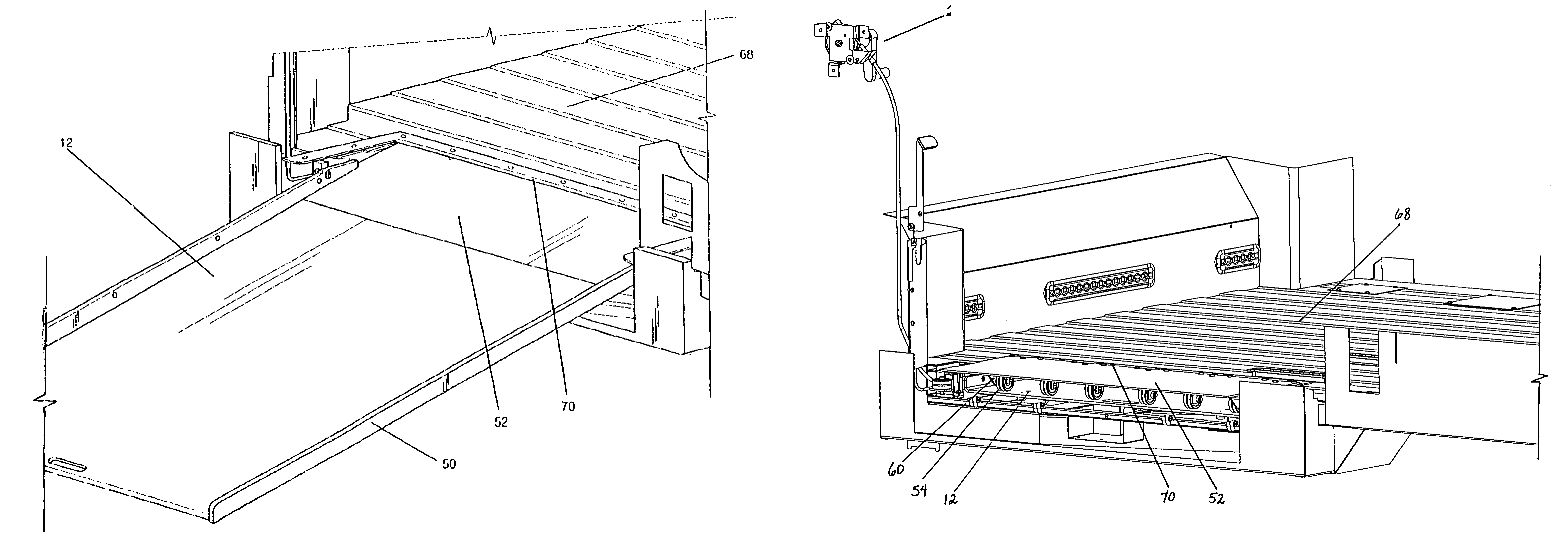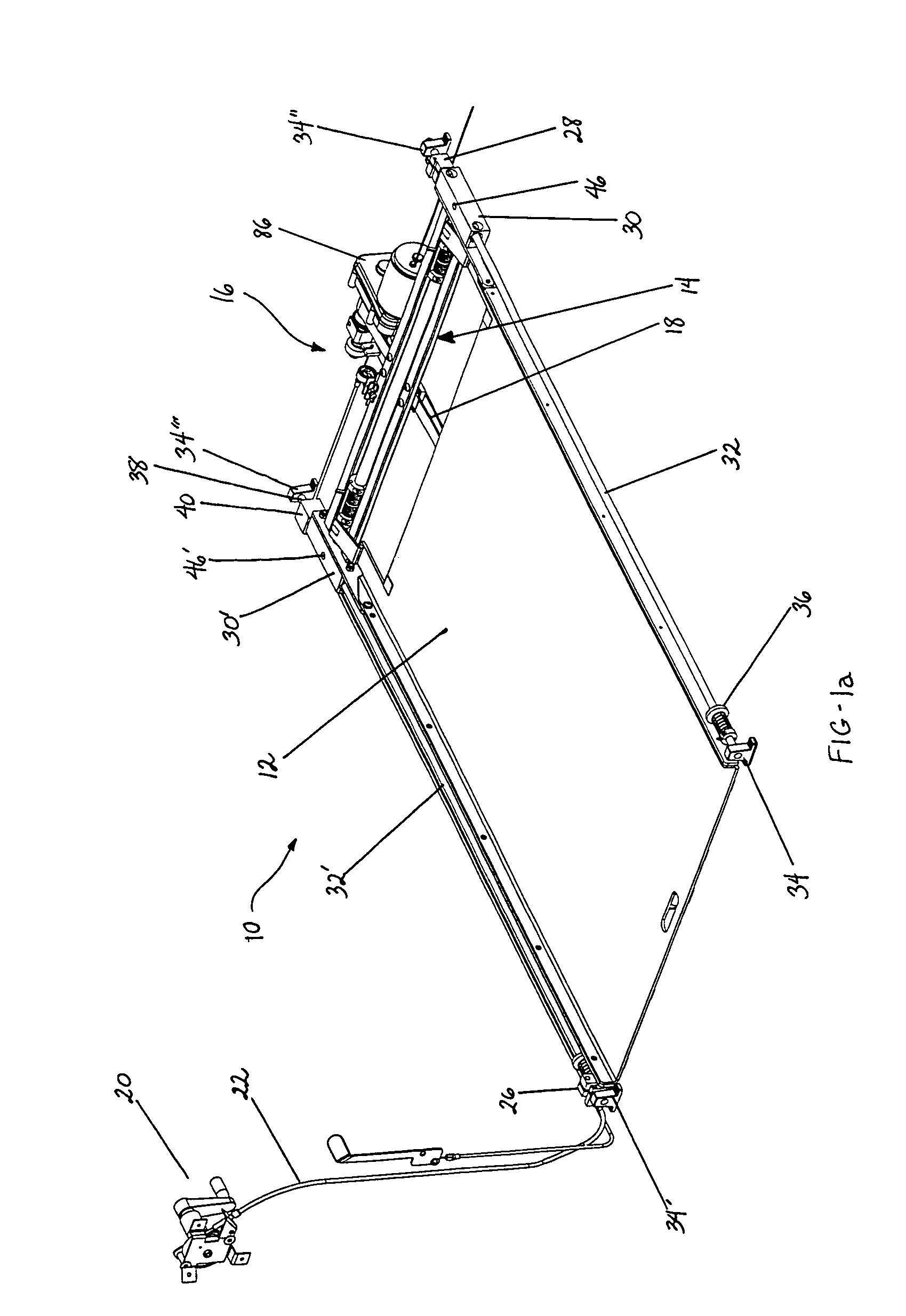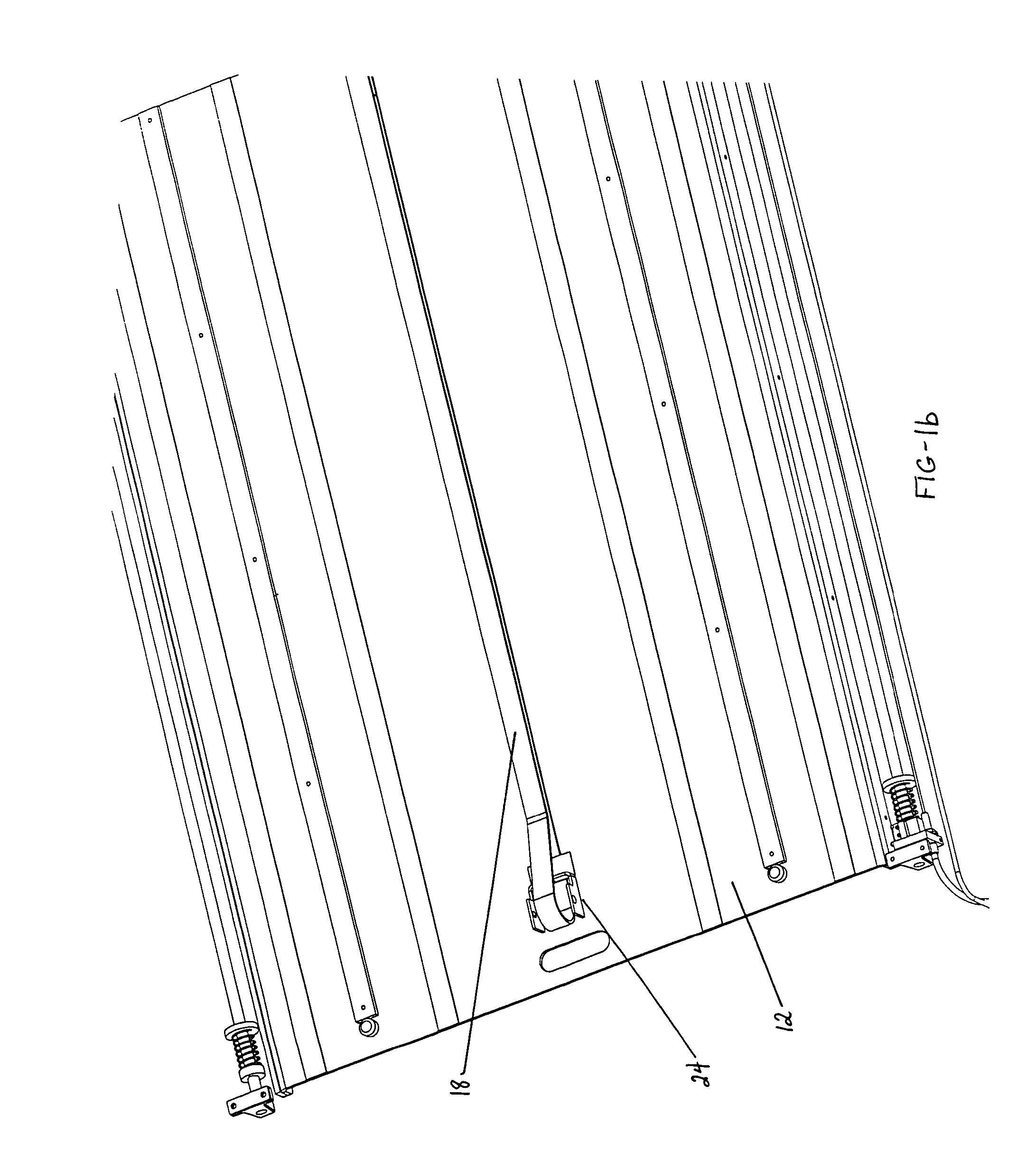Retractable ramp system for a mobility vehicle
a technology for mobility vehicles and ramps, applied in the field of retractable ramps, can solve the problems of inconvenient manual translation of ramps, inconvenient use, and difficulty in addressing the problem of low profile required for horizontally mounted ramps, and achieve the effect of easy manual translation, increased occupant space, and convenient us
- Summary
- Abstract
- Description
- Claims
- Application Information
AI Technical Summary
Benefits of technology
Problems solved by technology
Method used
Image
Examples
Embodiment Construction
)
[0057]The present invention is a system and method for deploying and stowing a low-profile ramp incorporated horizontally into the floor of a mobility vehicle to allow a smooth transition between the floor of the vehicle and the ground, or other external surface. The preferred embodiment of the present invention for a retractable ramp system includes a ramp platform, carriage assembly, ramp transition flap, motor and drive belt, mechanical motor release, and manual control capability. The construction of the invention is described first followed by the method of operation.
[0058]As used herein the term “mobility vehicle” refers to any vehicle used to transport disabled individuals, including but not limited to standard-sized vans, mini-vans, buses, trains, and the like. As used herein, the term “distal” refers to those points at a distance from the mobility vehicle, such as the end of the ramp that engages the ground. Conversely, the term “near” refers to points closer to the mobili...
PUM
 Login to View More
Login to View More Abstract
Description
Claims
Application Information
 Login to View More
Login to View More - R&D
- Intellectual Property
- Life Sciences
- Materials
- Tech Scout
- Unparalleled Data Quality
- Higher Quality Content
- 60% Fewer Hallucinations
Browse by: Latest US Patents, China's latest patents, Technical Efficacy Thesaurus, Application Domain, Technology Topic, Popular Technical Reports.
© 2025 PatSnap. All rights reserved.Legal|Privacy policy|Modern Slavery Act Transparency Statement|Sitemap|About US| Contact US: help@patsnap.com



